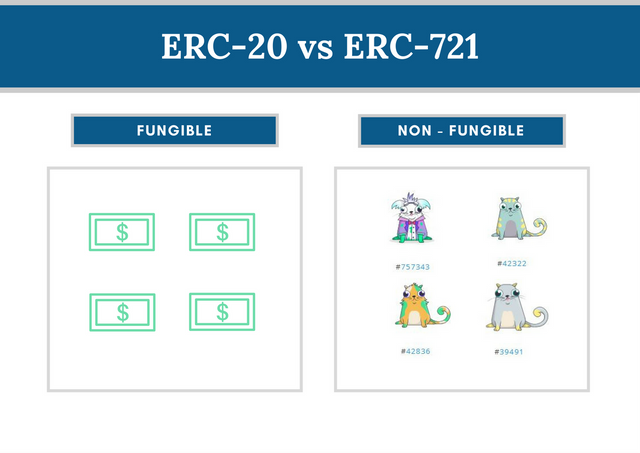In 2015, along with the growth of the Ethereum network, new possibilities emerged for decentralization. EVM that can run smart contracts is the trigger.
The introduction of smart contracts to the world led developers to build a platform to 'self-de-invest' in Ponzi schemes in traditional financial systems.
The developers' efforts were the discovery of various types of standard tokens that are widely used in cryptocurrencies today. The Ethereumnetwork itself has several token standards that are so popular and almost monopolize competition.
Here are some of the most popular token standards used today around the world:
ERC-20 (Standard for Fungible Tokens)
Invented in 2015 by Fabian Vogelsteller, ERC-20 is a token standard in the Ethereum network. The discovery of this ERC-20 token standard makes unique contracts on cryptocurrencies easy.
ERC-20 makes standardization in naming functions as well as parameters. Such standardization can be called easily with a single interface. So that all tokens compatible with this standard can communicate using the same interface.
With the ERC-20, one interface can be used for all tokens on the same basis. This ease makes the ERC-20 token very famous. In addition, the success of various ERC-20-based ICOs, such as EOS, Bankex, Bancor and Tron, also helped lift the popularity of the ERC-20.
Basically, ERC-20 is a fungible token or token that cannot be exchanged for assets in any other form of value. So each token on the ERC-20 has the same value.It's like money; $500 will be the same value as the other $500.
Referring to data from Etherscan, there are currently 395,714 ERC20-based contracts.

But lately, the popularity of ERC-20 has tried to be torn down by Tron, who issued a standard token named TRC-20.

TRC-20
TRC-20 is on the Tron blockchain and is built to match the power of ERC-20 in Ethereum. TRC-20 implements tokens with TRON Virtual Machine(TVM).
This technical standard is compatible with scripts on the ERC-20, allowing developers using ERC-20to move to TRC-20 to change the scripts they've already created.
In addition to the bandwidth required, running smart contracts in TRC-20 also requires "energy". Energy is a term for the transaction fee in running a smart contract script that requires computing resources such as CPU and memory.
The amount of energy needed follows how complex the TRC-20 script is made. So far, there have been 39 contracts made with this TRC-20.
.png)

ERC-721 (Standard for Non-fungible Tokens)
ERC-721 is arguably the more advanced token of the ER-20, which is classified as a Non-fungible token. Suppose ERC-20 is a type of token for an asset such as money.ERC-721 is a token standardization to represent a physical asset, such as a baseball card, digital pet, or weapon in games.
On ERC-721, each token is unique and can have different values. For example, pets, let's call them cats; If you keep a cat, your cat must have specific characteristics.
The color of your fur, face shape, and other features in your cat will be different from other people's cats. With the ERC-721 token, you can represent the cat's ownership and the specific features for the cat.
ERC-721 makes ownership of unique items possible. Tokens in ERC 721 can define a set of behaviors and events on token contracts. This includes first proprietors, turnover of ownership, and unique information about non-interchangeable items.
Etherscan noted there were 11,117 ERC-721-based contracts.
.png)

ERC-1155 (Standard for Fungible and Non-fungible Tokens)
ERC-1155 is a standard for digital tokens created by a company called Enjin. These tokens can be fungible and non-fungible assets (collectible cards, pets, and assets in games), even semi-fungible.
Using the Ethereum network, the ERC-1155 is secure, merchantable, and immune to hacking. This token standard can represent a variety of assets even outside the gaming ecosystem within the Enjin blockchain, so a single investment -e.g., a sword- can be used in various games.
This token standard arises from developing games and blockchain platforms that make many game developers issue different types of tokens. The need for a standard that can support these new types of tokens triggers the presence of ERC-1155.
Even so, this token standard is not only intended for games. The advantages of sending various types of tokens can be helpful for trading and bundling transactions to save expenses.

Conclusion
Like all other standardizations in an ecosystem, evolving needs will require new standards that match those developments.
This process is fundamental for the ecosystem to grow in an orderly and efficient manner. Likewise, in the cryptocurrency ecosystem, emerging token standards fill voids that their predecessors cannot load.
Some advantages and disadvantages stick to every standardization. That makes each standard uncomparable to each other on an Apple to Apple basis.
Perhaps the correct thing to do right now is to use a standard according to the token standard's needs. The cryptocurrency world will undoubtedly continue to grow in the future, so basic information like this becomes mandatory consumption if you want to prepare for such developments.
cc: @pelon53
Jangan Lupa Bahagia


Shared on Twitter : https://twitter.com/LEVYCORE/status/1390708683198189570
Downvoting a post can decrease pending rewards and make it less visible. Common reasons:
Submit
hai bang, pue atra neupeugah nyan... saket igoe teuh wate tabaca agoe. hahaa
Downvoting a post can decrease pending rewards and make it less visible. Common reasons:
Submit
Gracias por participar en Steemit Crypto Academy:
Un placer contar con esta muy buena publicación, incrementando el conocimiento Gracias por compartir su punto de vista
Calificación: 9.0
Downvoting a post can decrease pending rewards and make it less visible. Common reasons:
Submit